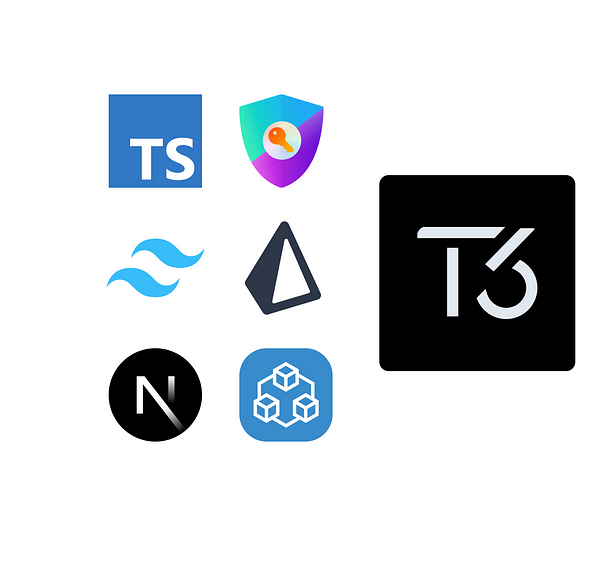The T3 Stack
 Arnab Chatterjee
Arnab Chatterjee
I wanted to talk about the Next.js, TypeScript, and Tailwind CSS (T3) stack. If you haven't already heard, the T3 stack is swiftly gaining recognition as a top option for creating Web-apps . I'll explain why it deserves a shot.
Let's start by discussing Next.js. A robust React-based framework, that makes it easier to create server-side rendered applications. It comes with a tonne of features out of the box, such as client-side navigation that works seamlessly, automatic code splitting, and server-side rendering. Plus, with its recent release of Next.js 13, the framework has introduced even more exciting features such as React Server Components, Async Components, Turbopack, and Automatic Image Optimization.
Next is TypeScript, which is a superset of JavaScript that improves the developer experience by offering static type checking. By adopting TypeScript, you may enhance code quality, find mistakes before they run, and provide improved IDE support. Any project would benefit greatly from adding it, especially as it gets more complicated.
Last but not least, Tailwind CSS is a CSS framework that focuses on usefulness first and provides a straightforward approach to style your application. Developers may concentrate on the functionality of their components without getting bogged down in CSS code because to its innovative technique of employing pre-defined classes. Tailwind makes it simple to develop consistent and responsive designs, and it's simple to learn and use because to its excellent documentation and vast community.
However, T3 stack also provides other strong tools that can further enhance your development experience. For instance, the TypeScript-based RPC framework tRPC streamlines client-server interactions. It provides a type-safe mechanism to create your API, generates client code automatically, and gives real-time updates with events given by the server.
Another excellent tool that makes database management easier is Prisma, which offers a type-safe and contemporary query builder. Boilerplate code no longer needs to be written, and it makes it simple to integrate with other databases like PostgreSQL and MySQL.
Finally, NextAuth.js makes authentication in Next.js applications simpler. It provides an easy way to add unique authentication methods and supports a number of different authentication providers, including Google, Facebook, and Twitter. Additionally, it's a fantastic addition to any project that needs user authentication thanks to its flexible API and user-friendly interface.
Overall, the T3 stack offers a superb collection of technologies that can make it easier and faster for you to create robust, cutting-edge web apps. If you haven't tried it yet, I strongly advise doing so!
additionally integrated authentication support. Give T3 a try if you're seeking for a cutting-edge tech stack that's worth your time!
Do you currently use the T3 stack? let me know!
Subscribe to my newsletter
Read articles from Arnab Chatterjee directly inside your inbox. Subscribe to the newsletter, and don't miss out.
Written by

Arnab Chatterjee
Arnab Chatterjee
Im a developer form India currently studying b.tech in CSE from Academy of Technology. I love to explore various tech domain and love the field of web development and Blockchain. I am also an open source enthusiast with several contributions and a open source projects of mine. I love to write technical blogs to share my learnings